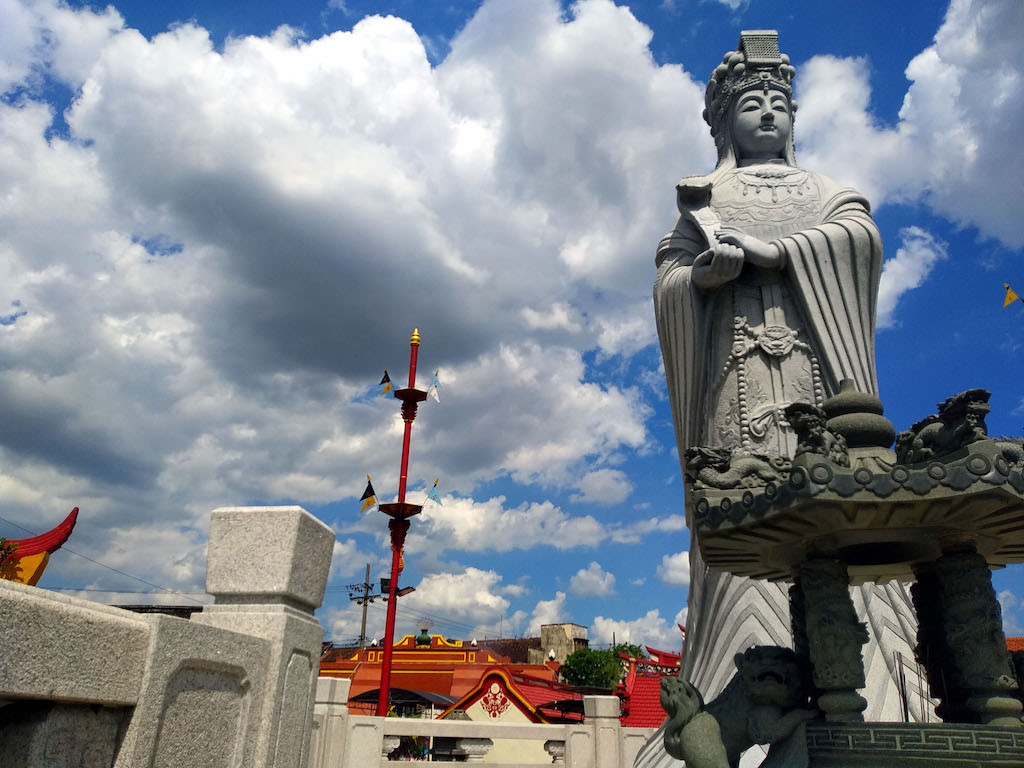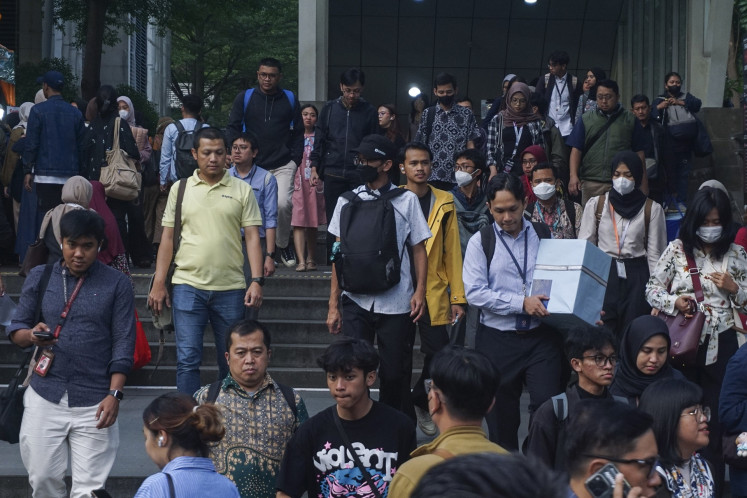Popular Reads
Top Results
Can't find what you're looking for?
View all search resultsPopular Reads
Top Results
Can't find what you're looking for?
View all search resultsConfucians uphold cleaning ritual at Kediri temple
To welcome Chinese New Year, Confucians in Kediri, East Java, took part in a traditional ritual.
Change text size
Gift Premium Articles
to Anyone
A
15-centimeter-tall statue rested on the left hand of 70-year-old Liem Djie. With Liem’s right hand, he carefully rubbed a wet towel over the statue, cleaning dust off of it.
“About 500 years ago, our ancestors sailed from mainland China and arrived here in Kediri. They brought along this rupang (statue) of Makco Thian Siang Sing Boo, the Sea Goddess. In Kediri, they built a temple and placed this rupang inside,” said Liem, head of Tjoe Hwi Kiong Temple on Jl. Yos Sudarso in Kediri, East Java, on Jan. 18. It stands alongside the Brantas River, one of the largest rivers in Java.
As dozens of Confucians and adherents of traditional Chinese beliefs gathered to help clean the statues of their gods, Liem and several religious figures began chanting "Song Sen", a special prayer to cleanse the heart and to ask for permission for the cleaning ceremony.
That Saturday was the only day in a year when Confucians got to clean their altars of worship. They believe that seven days before the lunar calendar marks the new year, the gods in the statues fly to the sky and return to the house of God.
Liem took longer to clean the statue of Makco Thian Siang Sing Boo statue, a goddess that is heavily worshipped in East Java. “Makco Thian Siang Sing Boo was our ancestors’ savior when they sailed the seas from China to Kediri,” said Hermin, a participant of the ceremony.
Historians Zao Ru Kuo and Chau Ju Kua noted that interactions between China and Java began in the 10th century, during the reign of the Kediri kingdom. A large migration to Java, with some settling down in Kediri, was estimated to occur in the 16th century, driven by revolts that led to a transition of power from the Ming Dynasty to the Qing Dynasty.
For hundreds of years, those of Chinese descent lived and mingled with the Javanese. Cultures from both countries blended and seeped into daily life. But their existence in Java began to ruffle some feathers in the Dutch colonial era.
In Soeharto’s New Order regime, which reigned for over 30 years, Confucianism was excluded from the list of recognized religions in Indonesia. Confucians and adherents of traditional Chinese beliefs could only perform their rituals in secrecy.
Read also: In Surakarta, Chinese-Indonesians heal old wounds for sake of harmony
“The temple was mostly closed, even during the day. Praying at the temple felt like a violation [of the law],” Hermin said.
Things started to change with Soeharto’s resignation in May 1998, when former president Abdurrahman Wahid lifted the 34-year ban on Confucianism in 2000.
But the 30-year repression left its mark on Confucianism in Indonesia, apparent by how the cleaning ceremony was practiced mostly by middle-aged people. Growing up without a clear sense of the religion, the younger generation found themselves distant and unfamiliar with Confucianism.
Hermin said that his children and grandchildren were Catholics, and he appreciated that there were times when they prayed to their ancestors the way he did.
“My children and grandchildren are free to embrace other religions as the most important thing for me is that they are still willing to respect their ancestors’ beliefs,” he said.
By the time the sun almost set, the cleaning ceremony was completed. The statues were returned to their original positions at the altar. With that, people began to leave the temple.
Tjoe Hwie Kiong Temple would hold more rituals on the following days, including on Chinese New Year and on the fourth day of the new year. The Cie Shen prayer would be recited with hopes for fortune throughout the year. It is the day when the gods are believed to descend back to earth and return to the statues.
The new year’s rituals and celebrations will end with a prayer for happiness and togetherness among fellow human beings, followed by Cap Go Meh celebrations on Feb. 8, featuring a barongsai (lion dance) and lontong (rice cake) eating ceremony. (vel/wng)











